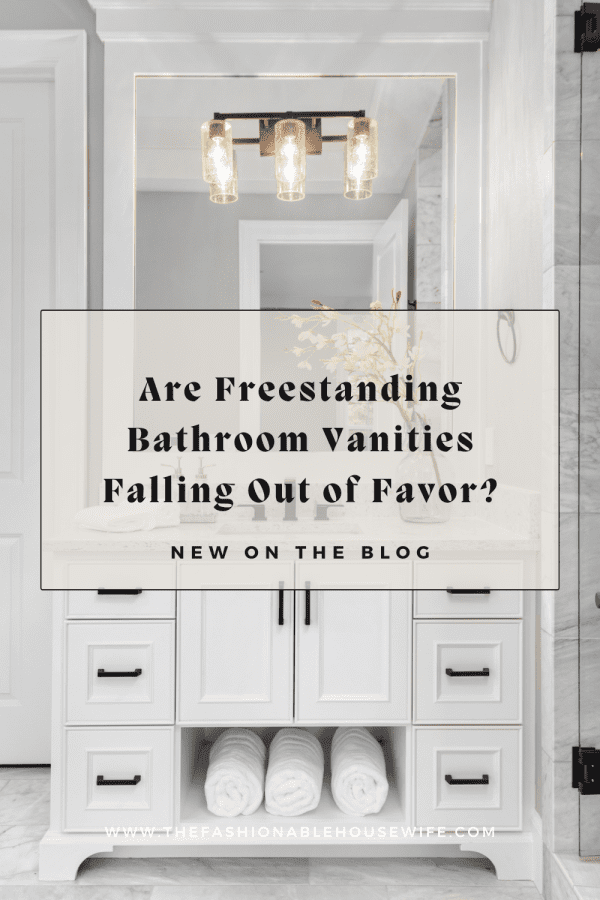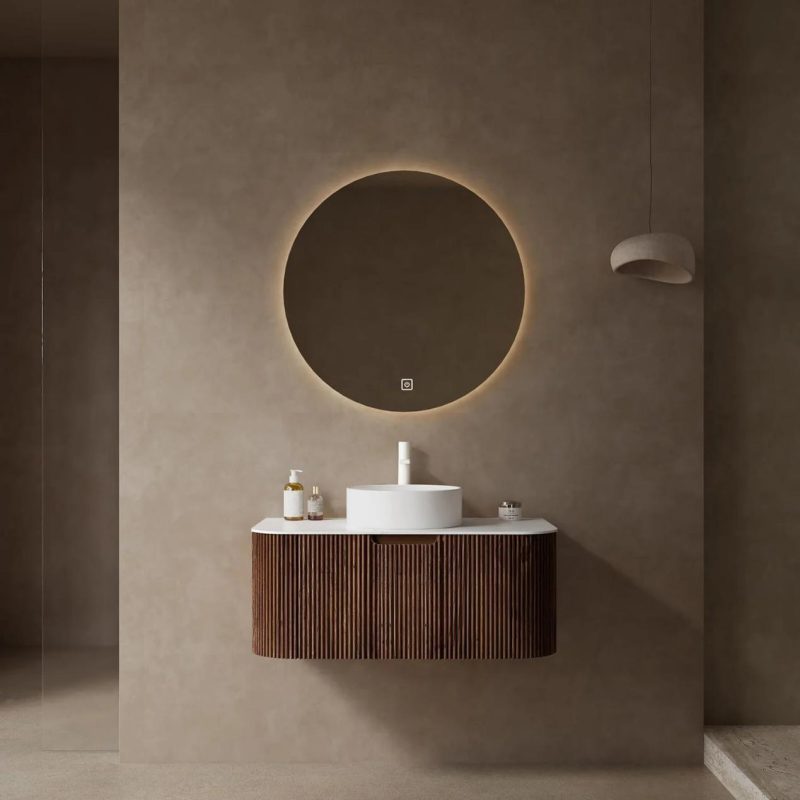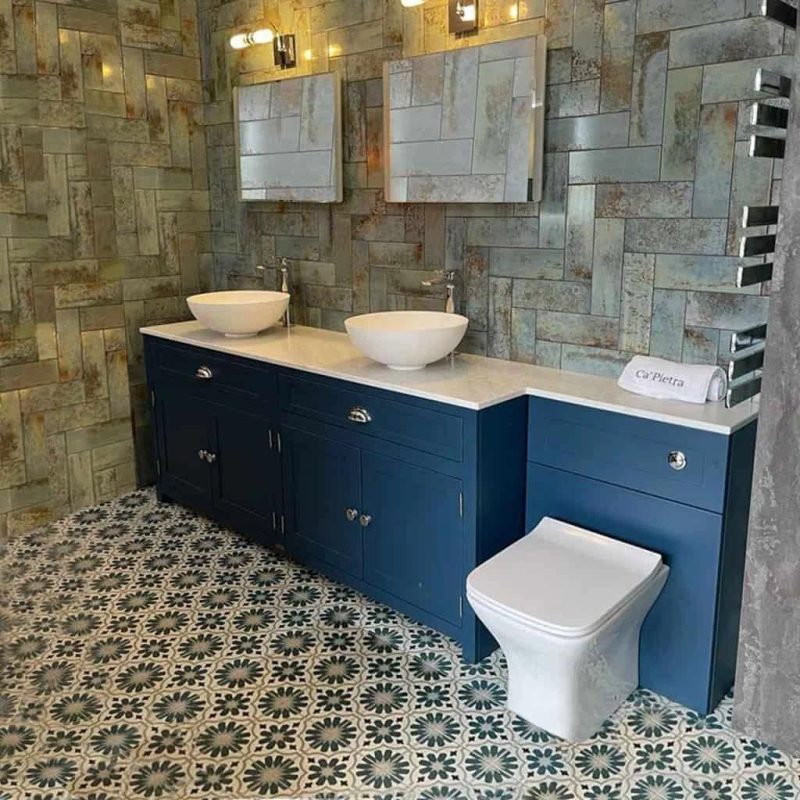Are Freestanding Bathroom Vanities Falling Out of Favor?

You might have heard it before—“Freestanding vanities are no longer in style.” But is this really the case? If you’re planning a bathroom remodel, should this trend change your decision? In this guide, we’ll break down the current status of freestanding bathroom vanities from the perspectives of design trends, functionality, and spatial considerations to help you make a decision that suits your home—not just the trend cycle.
Why Freestanding Vanities Are Losing Ground
Rise of All-in-One Bathroom Systems
In recent years, integrated and modular bathroom furniture has become the norm. These all-in-one vanity units combine the sink, cabinetry, mirror, and sometimes even the toilet into a cohesive design. Think of the common “vanity + wall cabinet + mirror” combo—it creates a clean, streamlined look with minimal effort.
This trend is especially popular in pre-furnished apartments or fast-renovation projects. In fact, a 2024 industry report showed that over 40% of bathroom vanities sold were part of integrated units. Their standardized sizes and quick installation can cut remodeling time by nearly 50%.
Small Homes, Big Efficiency
For homes under 970 square feet, maximizing every inch counts. Many homeowners are now relocating the sink area to the hallway or entryway and opting for floating or built-in vanities. This setup supports wet-dry separation and frees up valuable floor space inside the bathroom.
For example, in a 650-square-foot two-bedroom apartment, replacing a freestanding vanity with a floating bathroom vanity saved about 13 square feet of usable bathroom space—and eliminated dust-trap corners under the unit.

Why Freestanding Vanities Still Matter
A Must for Personalized Style
Freestanding vanities offer unmatched design flexibility. They’re ideal for styles that demand visual character and unique materials:
- Vintage: Cast-iron pedestal sinks paired with carved countertops help recreate that classic European charm.
- Wabi-sabi/Minimal Rustic: Hand-poured concrete sinks on natural wood frames evoke a raw, organic feel.
- Sculptural & Artistic: Think freestanding sinks in petal-shaped stone or wave-like glass—these become the showpiece in luxury master bathrooms.
The Right Fit for Unusual Spaces
- High Ceilings (11 ft+): Pedestal vanities visually anchor tall bathrooms better than low-slung built-ins.
- Odd Corners: Custom freestanding units can be shaped to fit angular layouts. One homeowner installed a triangular basin in a tricky corner, increasing the room’s functional use by 80%.
- Historic Renovations: Since plumbing usually doesn’t need to be moved, freestanding vanities are ideal for older homes—lowering remodeling costs and avoiding major construction.
Freestanding vs. Floating vs. Built-In
| Feature | Freestanding Vanity | Built-In Vanity | Floating Vanity |
|---|---|---|---|
| Footprint | Larger—ideal for bathrooms 55 sq. ft.+ | Fits into wall space, saves floor area | Floating look, great for compact spaces |
| Storage | Limited unless cabinet is included | High storage capacity | Requires separate shelving |
| Ease of Cleaning | Base collects dust, requires bending | Flush with floor, easier to mop | Open underneath, most cleaning-friendly |
| Installation | Easiest—floor-mounted, minimal support | Requires precise wall fit | Needs wall studs; load-bearing required |
| Price Range | $280–$1,100 on average | $140–$700 with good storage | Basic models from $70–$300, custom designs cost more |
Further Reading: Floating vs. Freestanding Vanity: Which One Fits You Best

Should You Choose a Freestanding Vanity?
Step 1: Assess Your Bathroom Layout
- If your bathroom is under 45 sq. ft., consider a floating or built-in unit to avoid cramping.
- For taller ceilings (10 ft or higher) or unique angles, freestanding may help balance proportions.
Step 2: Understand Your Needs
- If you require lots of storage for toiletries, towels, and extras, freestanding pedestal sinks may fall short—go with a built-in vanity with drawers or cabinets.
- Concerned about dust buildup? Choose a raised-leg freestanding unit or switch to a floating vanity for easy sweeping.
Step 3: Match the Design Style
- Styles that suit freestanding vanities: Vintage, wabi-sabi, Nordic (wood-tone units), or industrial (iron-frame bases).
- Styles better suited to built-in systems: Minimalist, modern, or Japandi—these prioritize uniform lines and clutter-free surfaces.
Final Thoughts
Saying freestanding bathroom vanities are “out of style” oversimplifies what’s really happening. They’ve shifted from being the go-to option for everyone to a more intentional choice for those seeking design impact or dealing with unique layouts.
The bottom line for homeowners: Don’t blindly follow bathroom trends. Instead, let your bathroom’s size, your functional needs, and your preferred aesthetic guide the way. If you value character and your space allows it, a freestanding vanity can absolutely become the visual highlight of your bathroom. But if practicality and efficiency are top priorities, a built-in or wall-mounted solution may suit you better.
Because in the end, the most stylish bathroom is the one that actually works for you.
And if you’re looking for a wide range of well-crafted vanities—whether modern, vintage, or custom—Giving Tree Home is a great place to start. They offer both style and substance, with curated collections to suit every kind of bathroom.

